Import substitution in practice. Part 3.1. "QP OS". The first of its kind review of the operating system
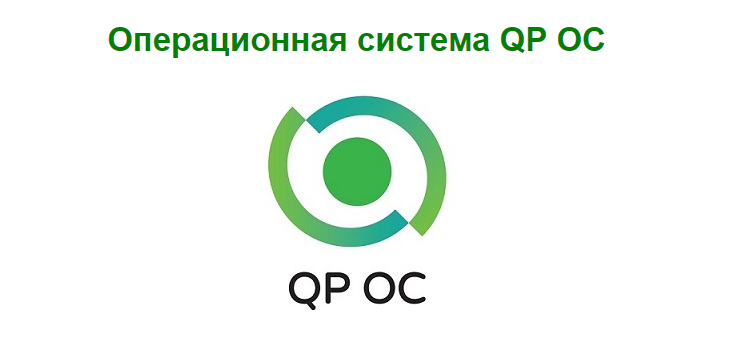
Up to this point there have been no reviews of this OS. Authors and developers keep their secrets, and do not want their work to be leaked to the network and made public. In this regard, testing QP OS is possible only under the contract, and, at this time, only for legal entities. I was given the opportunity to touch this OS, and write an article about it.
All interested in domestic software development - please under the cat.
0. A little more from the author
After the publication of an article about domestic operating systems , we had a small “skirmish” with a representative of the NTP “Cryptosoft”, in consequence of which I was asked to review their creation, QP OC. No sooner said than done.
First of all, I ask you to draw your attention to the underlined text below. The picture shows the comment of the representative of the NTP "CryptoSoft":
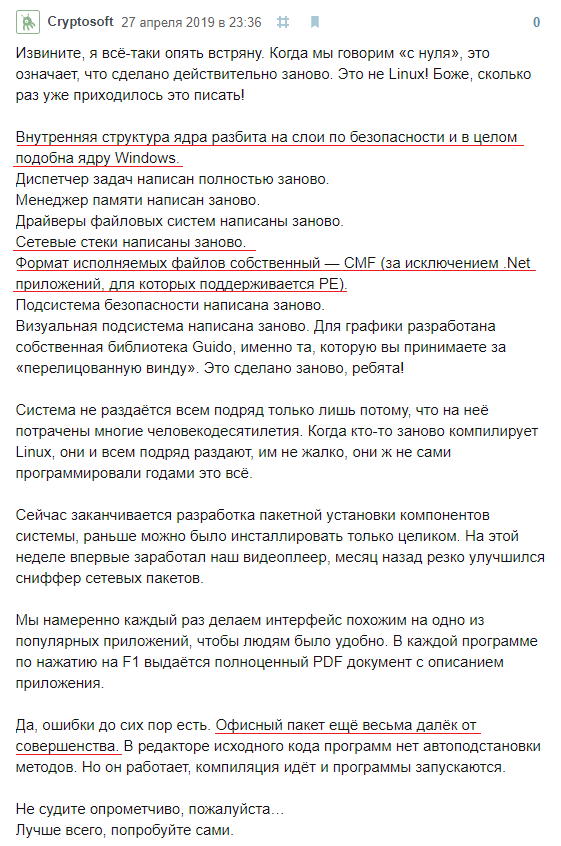
')
I was provided with an OS build. What they cut out of it, that - no, they did not tell me. So let's assume that I have a clean distribution on my hands, and everything that can be touched works in it.
Further.
This will not be an article with the praises of a Russian developer who wrote the system from scratch, and began its development before it became main stream.
This is, in essence, a custom article for which I will not receive money. I wrote it only because it was interesting to me, and a developer representative got tired of answering questions like “which Linux distribution does your system based on?”.
The article will be my personal opinion, formed in the process of familiarization with the provided OS.
The OS developer from the draft provided did not ask to cut out anything at all. In the contract concluded between me and NTP "CryptoSoft", there are a couple of points that allow the OS developer to cut out objectionable material from the article. But I want to emphasize that he did not ask to cut something out. As for me, this at least deserves respect, since in some places I was not shy about it ...
I will test as convenience decreases. First under Hyper-V, then VirtualBox, then VMware, and then installation on hardware for performance testing and the hypervisor.
First of all, I ask you to draw your attention to the underlined text below. The picture shows the comment of the representative of the NTP "CryptoSoft":

')
I was provided with an OS build. What they cut out of it, that - no, they did not tell me. So let's assume that I have a clean distribution on my hands, and everything that can be touched works in it.
Further.
This will not be an article with the praises of a Russian developer who wrote the system from scratch, and began its development before it became main stream.
This is, in essence, a custom article for which I will not receive money. I wrote it only because it was interesting to me, and a developer representative got tired of answering questions like “which Linux distribution does your system based on?”.
The article will be my personal opinion, formed in the process of familiarization with the provided OS.
The OS developer from the draft provided did not ask to cut out anything at all. In the contract concluded between me and NTP "CryptoSoft", there are a couple of points that allow the OS developer to cut out objectionable material from the article. But I want to emphasize that he did not ask to cut something out. As for me, this at least deserves respect, since in some places I was not shy about it ...
I will test as convenience decreases. First under Hyper-V, then VirtualBox, then VMware, and then installation on hardware for performance testing and the hypervisor.
1. General
1.1. Hardware compatibility
- ACPI and UEFI support
- Up to 256 processor cores
- Up to 9 TB RAM
- IDE, SATA, SCSI, RAID, iSCSI, FC
- USB 3.1
- IEEE 802.3 802.11
1.2. OS composition
The OS, according to the developer, includes the following software:
- FTP server
- SMB server / client
- Web server
- Nginx
- QP VMM
- Mail server
- Mail client
- Games
- Browser
- Office
- DNS server
- RDP client and RDP server
- Screenshot of the contents of the "program" directory:
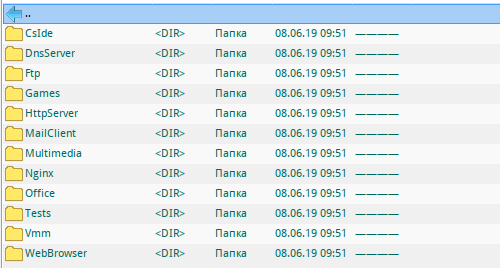
2. Hyper-V
2.1. Installation
So, go ahead in order.
How does system testing begin? With installation. Go.
Immediately make a reservation that, according to the developer, the system does not support a modular installation. This means that you can deploy the provided distribution "as is", and the period. Perhaps it is for this very reason that I also did not start the .exe software installation files. Or maybe not. It is not accurate. But, in any case, more on that later.
We will run in a virtual environment Hyper-V. Let's start the tests with VM 2nd generation.
And we face a problem, on the 2nd generation VM, the QP OC installer does not start. Hangs on it:
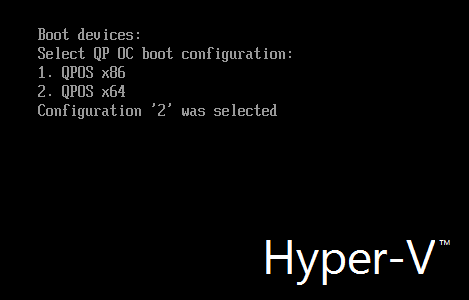
Well, we try VM 1st generation.


Starts. When installing, you can "minimize" the installer window. Apparently, the installation of the OS occurs when the live image of the system is launched, and the installation itself is already under it.

After the installation is complete, the system requires a reboot. And it hangs on this:

After the system was reinstalled, the situation did not change, the VM did not want to go any further “folding the kernel components”. Perhaps the reason for the size of the disk, more than 64GB, as the installer warned that, they say, if you want to use, you will need to boot in EFI mode. I removed the hard drive, created a new one at 50GB. And the installer for me started only from the 3rd time, hanging on "waiting for the system volume." Iiii ... nothing has changed. All the same hang on the "folding components of the kernel." If you just restart the VM with a hard reset, then it does not see the OS and does not start it.
In the end, it turned out that you just need to wait about 7 minutes, and do not touch the hung OS ...
Attempts to install a version of QP OS x86 did not lead to anything, everything hangs during the initialization of the installer. Specifically, the "waiting for the system volume" hangs tight, and it has to be hard reset. What is the reason - it is not clear, but x86 I have never once launched under Hyper-V.
2.2. After installation
Further, in chapter 2.2., There will be a common part that will be the same in the system for all hypervisors and installation on hardware. I placed it in this section so as not to violate the integrity of the information. But this part will be the same for VMware, for VirtualBox, and for installation on hardware, as there will be screenshots of the OS itself and work with it. There are differences only in the work of network adapters, but this will be written separately.
After the installation is complete, we are prompted to enter the administrator password and create additional users.

Next, enter the PC name, domain or workgroup and description.

After that, the OS goes into reboot.
Screensaver:
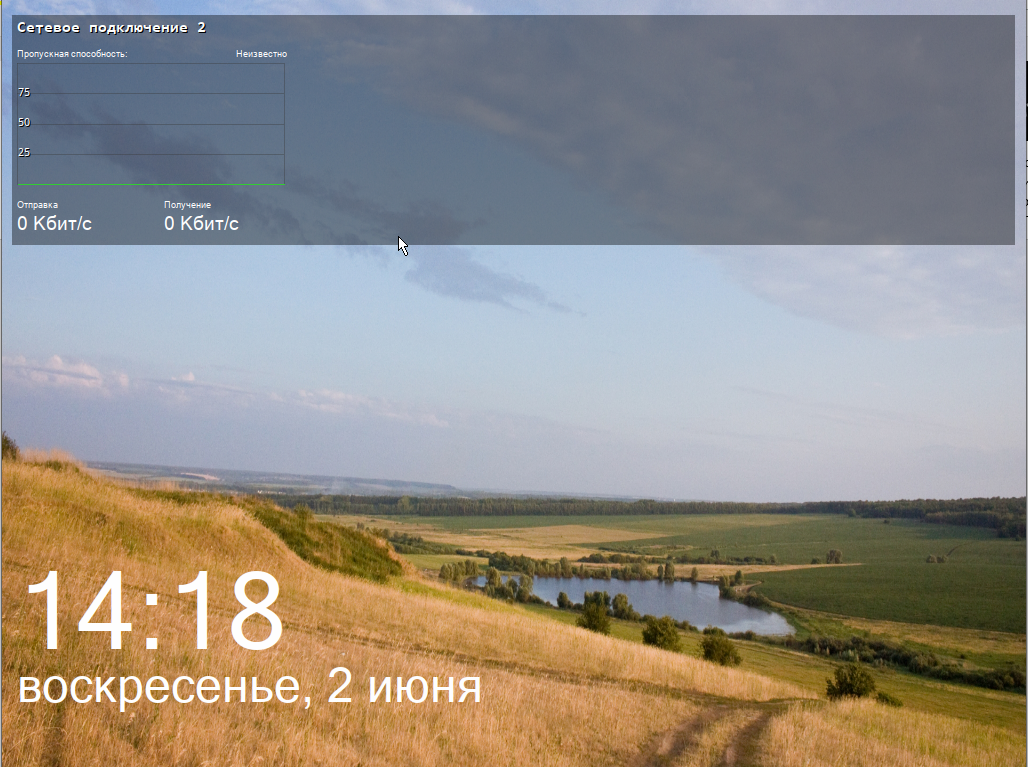
Login window:

Desktop after OS loading:

For what the autorun by default is the file viewer application - I did not understand.
2.3. OS screenshots
I warn you at once - everything looks like something that has already been seen before. Most user interfaces are from Windows. But there is also borrowing from other software.
Screenshots hid under spoilers, so as not to clutter.
Start menu screenshots:
PKM on the start menu:

The rest of the start menu screenshots:
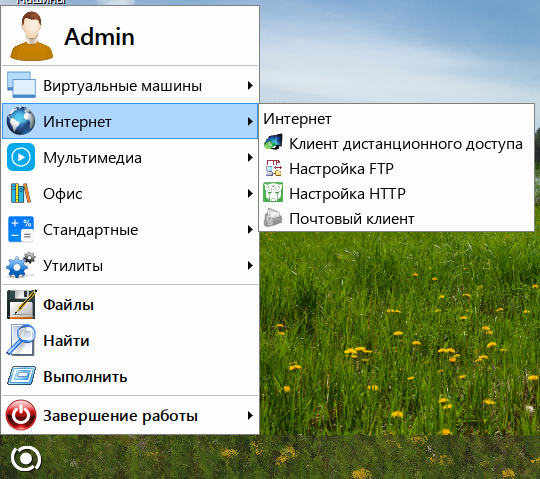
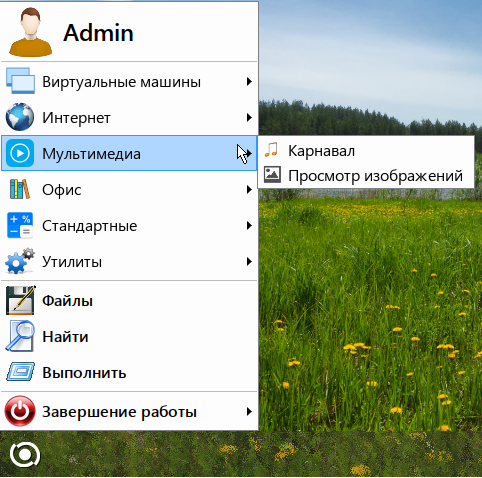







The start menu has a small visual bug. If you hover the cursor on the menu bar with a drop-down menu, and at the moment the drop-down menu appears, take the mouse, the appeared submenu will not disappear.
Screenshot:

Screenshots of software menu items from PCM on the Start menu:
Task Manager:





What is the problem of determining the processor clock frequency - I did not understand. (Right on the screenshot is an insert from the host system.)
Screenshot:

Registry Editor:

Device Manager:

Services: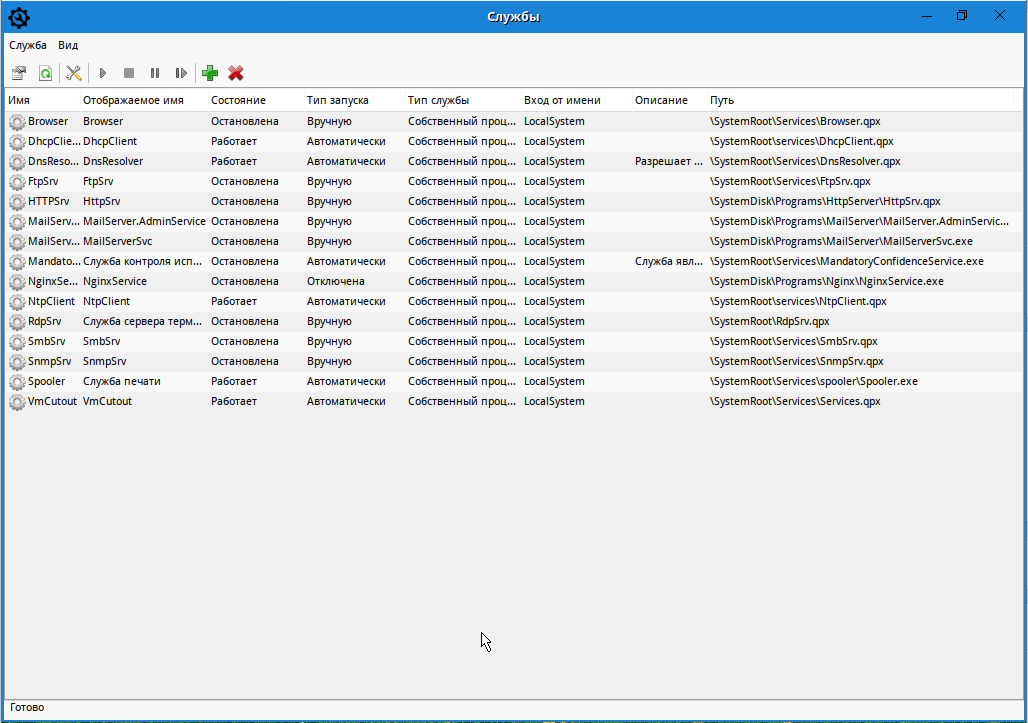

System logs: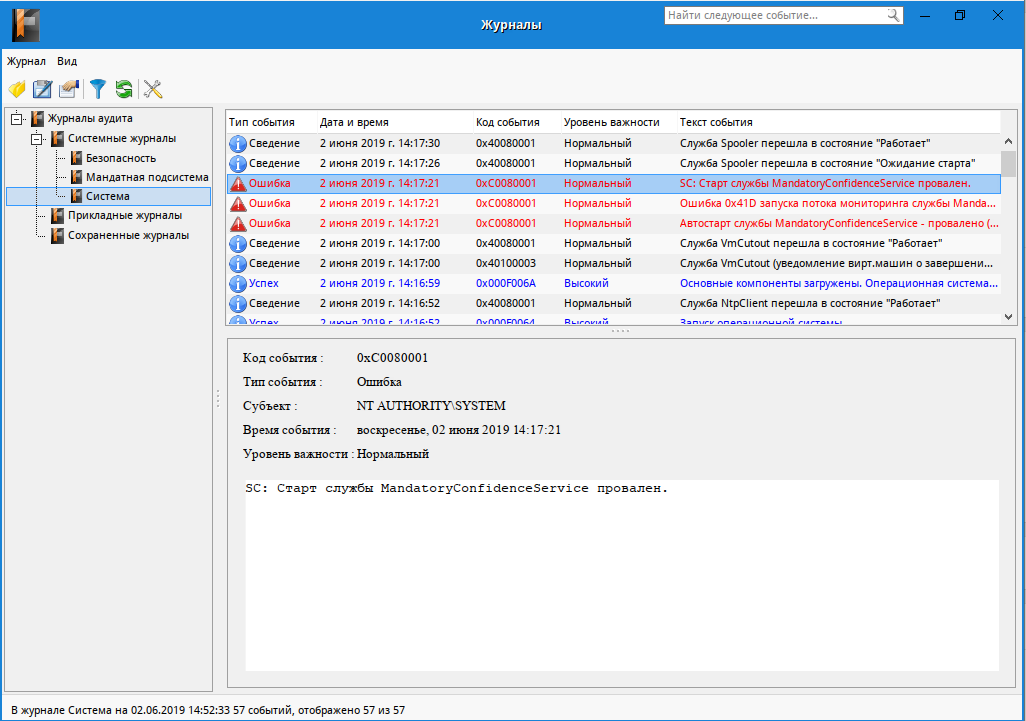

User management: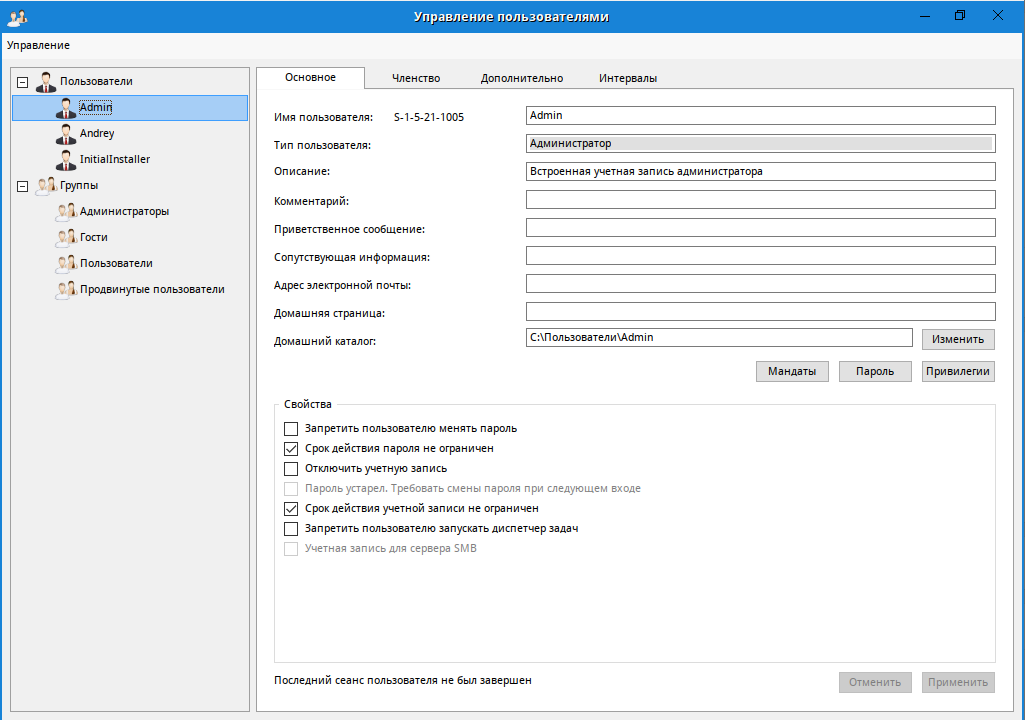

Virtual Machine Management: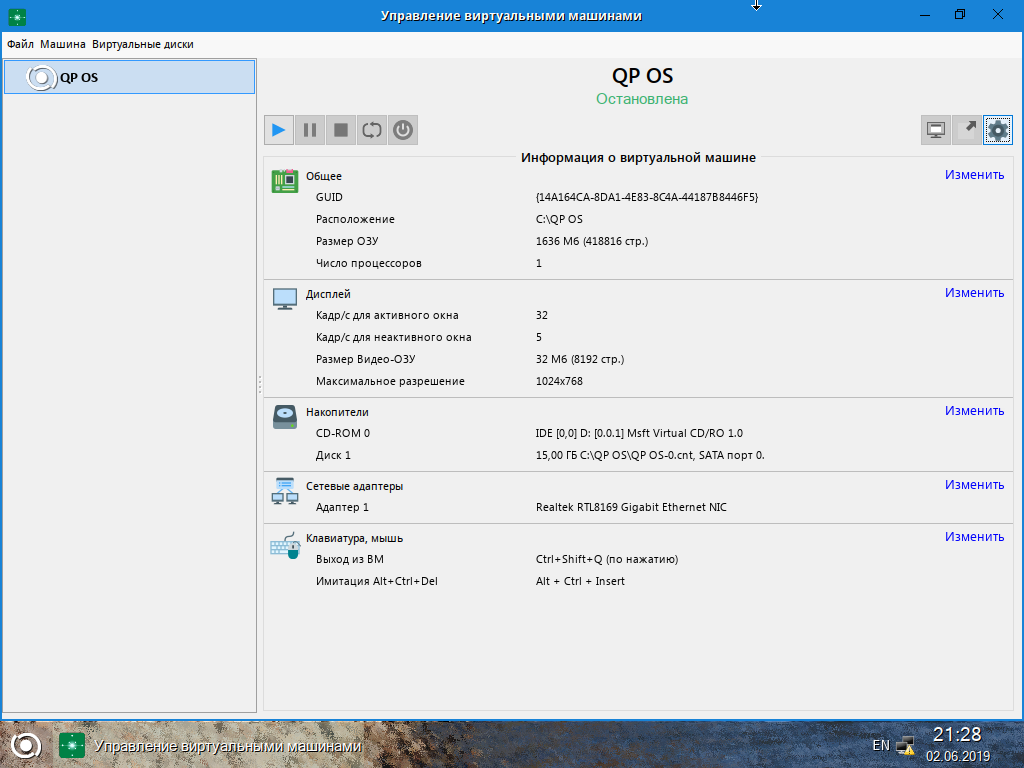
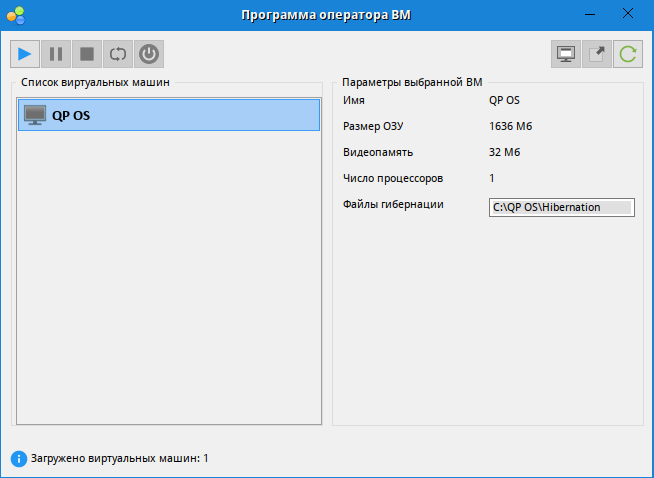


Firewall



Disk Management

There are several “embedded games” ... I didn’t watch everything, everything became clear to me from the sapper’s implementation. Double clicking with the mouse does not work if you know what I mean =)
Sapper: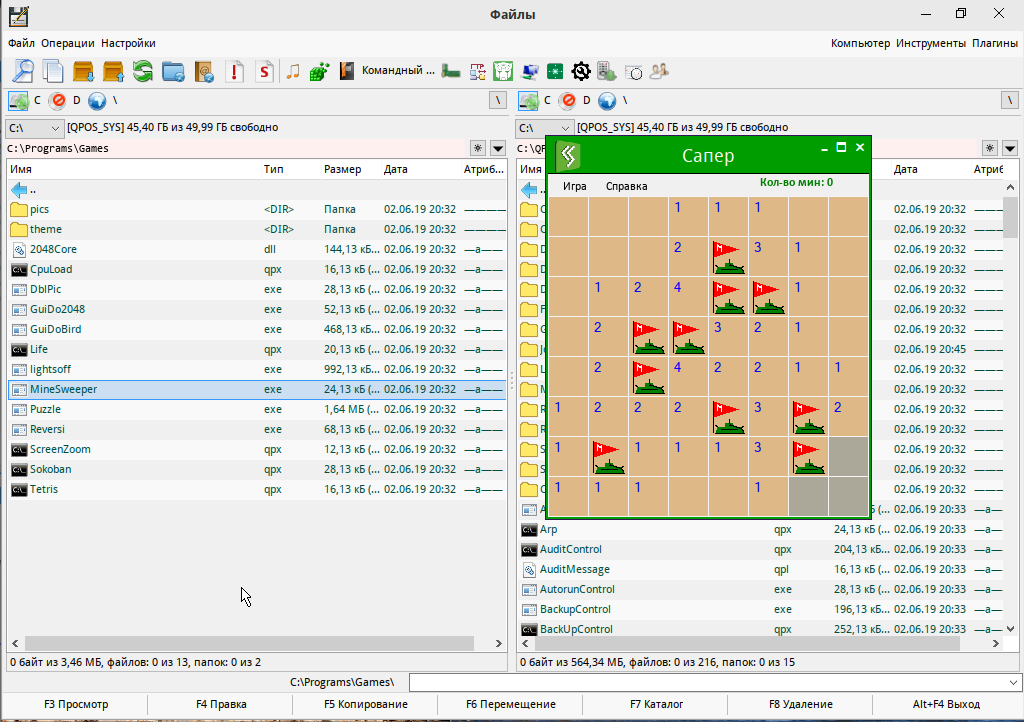

I also want to draw attention to the format of executable files:
Executable files:

From the comment given at the very beginning of the article, it was clear to me that none of * .exe there is supported ... But no, come on. But more on this later.
2.4. Work with QP OS
In QP OS we have the following list of packages:
- Noter is the same as Notepad. Nothing interesting, just a notebook
- Office suite , on which there is no point in focusing attention, since it is still under development. But frankly, at this stage it is simply not usable from the word at all
- QP VMM - hypervisor, about it below, separately
- Browser
- RDP client
- Firewall
- Calculator
Next in order:
2.4.1. Network
Next, go to the settings and work with the OS. The first thing I want is a network. Without a network nowadays anywhere. And here the problems begin. QP OC does not know how to DHCP ... Sorry, what?! Automatic network setup does not work ...
Screenshot: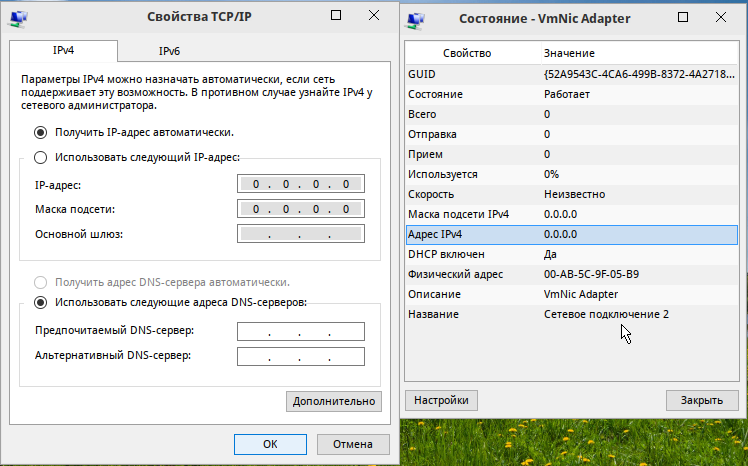

We are trying to figure out what the problem is.
Screenshot

Hmm ... And this is me from under the admin sitting ...
But in the end, the network adapter is still disconnected ...
Screenshot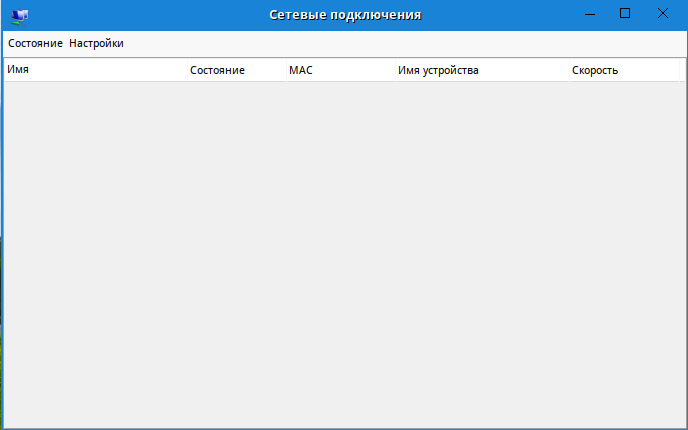

But to turn it back failed. I had to reboot.
Screenshot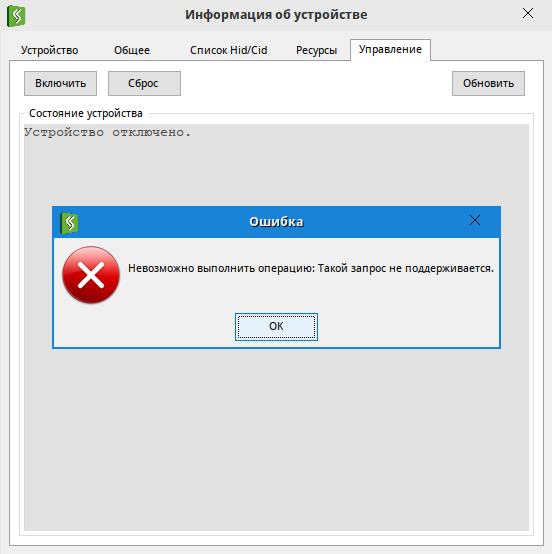

And with the restart of the OS, something inexplicable is going on. The launch hangs on "waiting for the system volume", and only the hard reset of the virtual machine helps. What is the reason? I did not understand, but it can hang tight 3 times in a row, or it can calmly reboot itself. Floating error. But if at the moment “waiting for the system volume” the strip under the logo does not move - the car is hanging, you need to reset.
The most interesting thing is that I didn't manage to start the network manually. Neither the "outdated network adapter" nor the "standard". He does not want to go QP OC to the Internet, and that's it.
BTW, IPv6 can not be disabled.

As a result, the network did not work.
What with DHCP:

What with the manual settings:

Whereas on the neighboring VM from the Win7 guest OS everything works by itself:

Yes, it may be that the possibility of network interaction is disabled in the assembly provided to me, but that would be sooooo weird ...
2.4.2. Authorization
Question to the developers: “Is authorization through the domain directory service supported? AD / SAMBA / enter_need? "
Developer response:
In the distribution provided, authorization through the domain directory service is not supported.
And why? Because it is not supported at all at the moment? It would be strange to cut this basic functionality from the image provided for testing. So most likely, it is not implemented. Until. So far - because in his report V.Yu. Egorov said that by next year they plan to make this functionality. We are waiting, sir.
2.4.3. Exe files
Earlier, I focused on the fact that executable files in the QP OS, as in Windows, have the .exe extension, while the developer claims that they have their own format of executable files.
In the end, I decided to run some cpu-z or 7z in QP OS. And I did not work out.
Doubleclick leads to nothing. The OS thinks for a second, after which it pretends that nothing happened.
Developer Comment:
Executable files in QP OS exist in 2 formats: CMF (.qpx, .qps, .qpl extensions) - our executable file format and PE (.exe, .dll extension) - Microsoft executable file format. The structure of the CMF files can be viewed by selecting the appropriate file in the file manager's file content editor by pressing F4. And make sure that the internal format of these executable files is exclusive. The PE file format had to be supported in order to organize the launch of applications for the .Net platform.
2.4.4. Command line
Like most other applications in QP OS, the command line is similar to Windows cmd. And you can even call it by Win + R, cmd. Where Win + R brings up the Run dialog box, the name of the cmd command is entered in it. Conveniently? Sure, no need to get used to something new. But, on the other hand, this is not even borrowing any more ... In short, all this causes contradictory feelings in me. Actually, like the whole system.
Screenshot CMD:

2.4.5. Browser
He is so minimalistic that I don’t even know what to say. This opens it in about 40 seconds. True, in the conditions of the inability to configure the network to see the work of the browser turned out to be impossible, so I just insert a screenshot and go ahead.
Screenshot: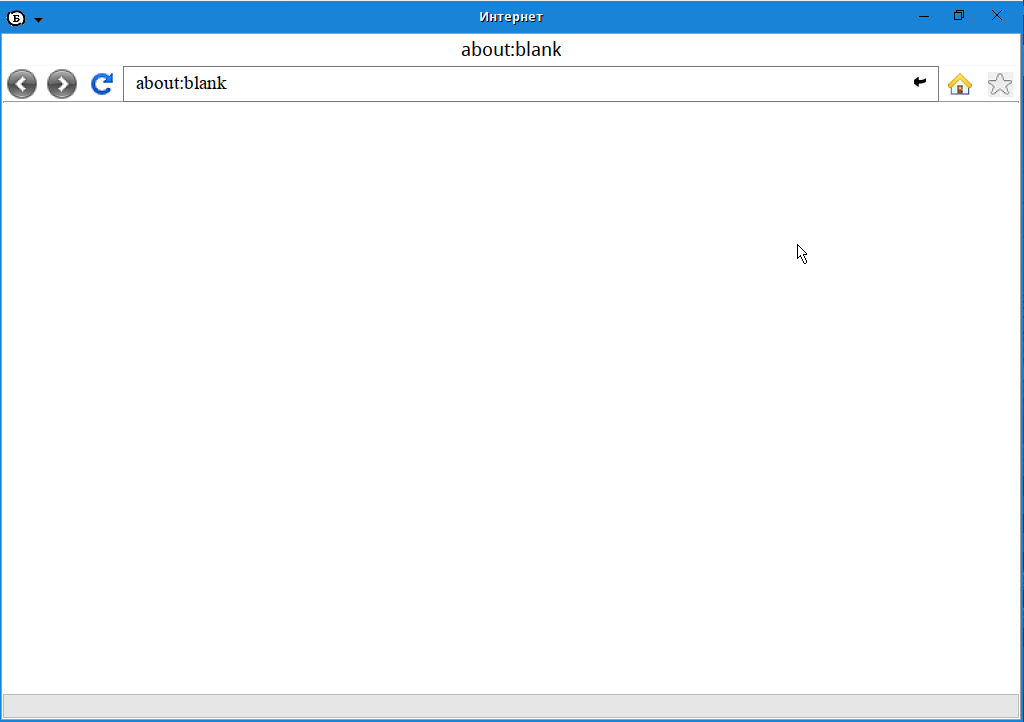

2.4.6. RDP client
It's all trivial. Some settings, nothing superfluous. At the same time, it is not clear with the forwarding of the equipment, because I cannot forward the disks already connected to the PC to the RDP? Hello, for the 2019th year in the yard ...
Screenshot: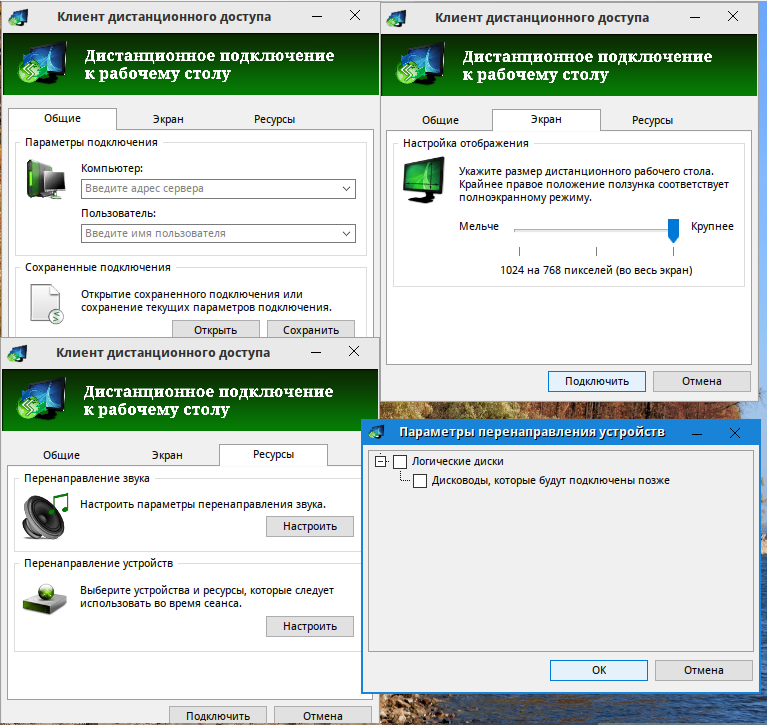

2.4.7. Firewall
The only thing I don’t want to find fault with is the firewall. It is simple and clear. The rules are configured in the graphical interface, everything is clear, nothing superfluous.
However, I don’t know how it will work in practice. Again, the network is down.
Screenshots: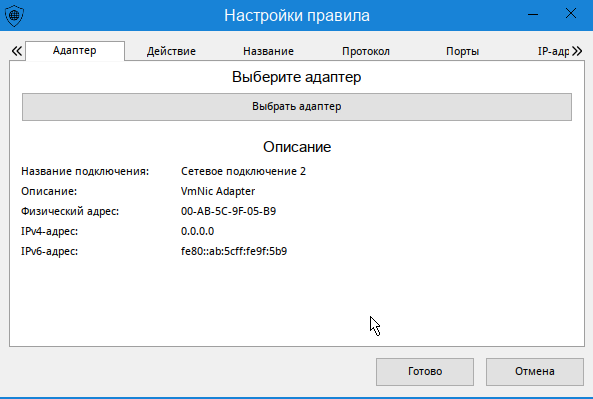
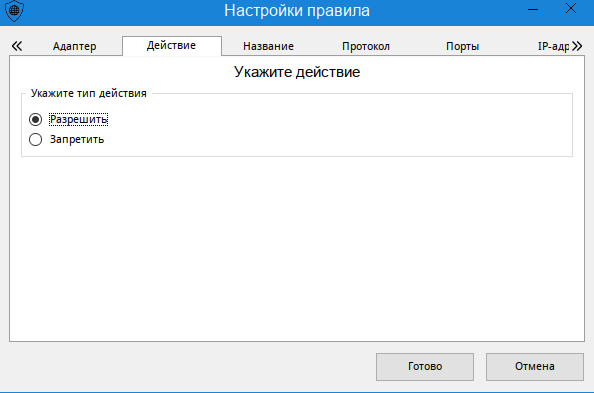


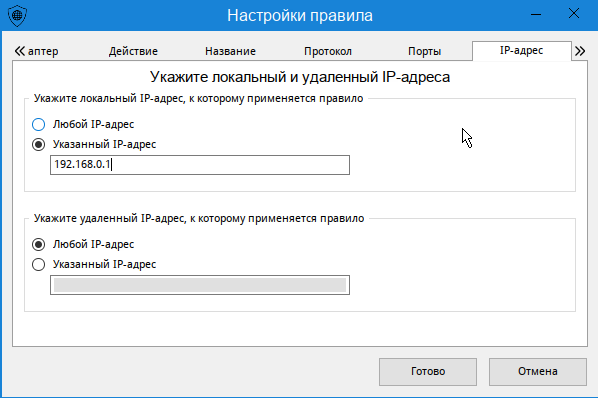







2.4.8. Calculator
Well. Then I just leave a screenshot, because everything is clear.
Calculator:

2.4.9. Services
Screenshot:

As I said earlier - the similarity is, in principle, not bad, but ... a spooler? What for? If you did not take Windows as a basis, and did not perform a series of illegal operations on it - why do you repeat such trifles? Well, just a printer? Not? "Print Service"? You do for the Russian people OS. Not? I dont know.
Nginx It is preinstalled, but does not start. Perhaps because the network is down, perhaps for some other reason. In the user manual about this there is no word.
Nginx launch

Or maybe it was just turned off in my build.
2.5. Developer Answer
(punctuation preserved)
“... normally network adapters should be 2.
VmNic is a virtual adapter that is needed for our hypervisor. You do not need to configure it.
You need to configure the second adapter.
If you do not have it, then it is quite possible that he was undecided on
default. "
To this I reply that this is “an outdated network adapter from Microsoft Hyper-V”, and that the QP OS does not see the “standard network adapter” at all.
"... Is it not possible to run the system under a different hypervisor? Porting the “obsolete network adapter” driver will take about a month. ”
Well, that is, in fact, QP OS does not support Hyper-V virtualization, one of the most common platforms ... And nobody talks about that. True, no one says that the system works on Hyper-V. In short, this is the case. In the official documentation or on the developer’s website there is not a word about which virtualization platforms their OS is compatible with. It should be noted. That product information is generally rather scarce.
3. Under Virtual Box
mmm ... Well, immediately after choosing the version to boot the OS, I get this:

That's all.
Developer Comment:
The problem when loading the Virtual Box arises due to the incompatibility of the audio unit with the drivers in the QP OS. If you disable the audio device, QP OS will run under the Virtual Box.
To be honest, I didn’t check if the VM starts up with the audio turned off. Due to the fact that no one in their right mind will use VirtualBox in industrial exploitation, I was not much interested in the question of working under it a QP OS. But as I communicate with the developers, I’m used to trusting them, because I never received an evasive or inaccurate answer. In a word, they did not try to mislead me in order to somehow profitably submit my creation, and therefore we will assume that without audio, the VM will start and will work.
4. Under VMware
Periodically, when switching to VM, inversion of the mouse pointer appears. It is treated by switching to the host and back to the VM. But still unpleasant.
4.1. Network
It's all much better. Downloading, installing, operating the OS itself is several times faster than under Hyper-V. Just the same 20 times faster.
It makes no sense to repeat, so let's move on to the fact that it was not possible to look under Hyper-V.
So, the browser.
And, no, the network is still not working automatically.
Screenshot:

What is the problem?
Screenshot: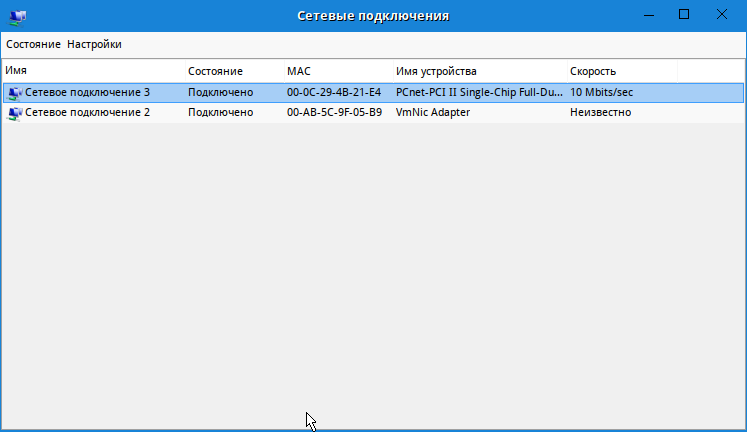

Adapters 2, as it should be. Well, ping on the long-suffering ya.ru
Screenshot:

Yeah. Do not rezolvitsya. Why? DNS?
Screenshot: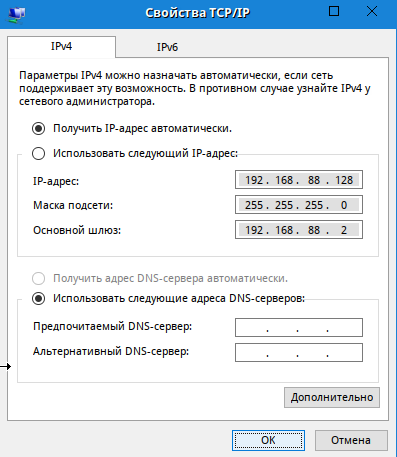

But why didn’t the DNS server get picked up by an automaton? 8.8.8.8 should come up. We must now update the network interface configuration just in case. And then suddenly what. At the same time let's see what is there for cmd and ipconfig / release / renew
Screenshot:

Hmm. Modestly all here. Simply rebuy the car.
Developer Comment:
The problem with obtaining DNS server settings via DHCP is currently being fixed.
Nginx service with a working network also did not start.

4.2. Browser

Hooray! Earned! .. After all earned? .. What is it? Version of Google page for the year 1995? ..
And Yandex? ..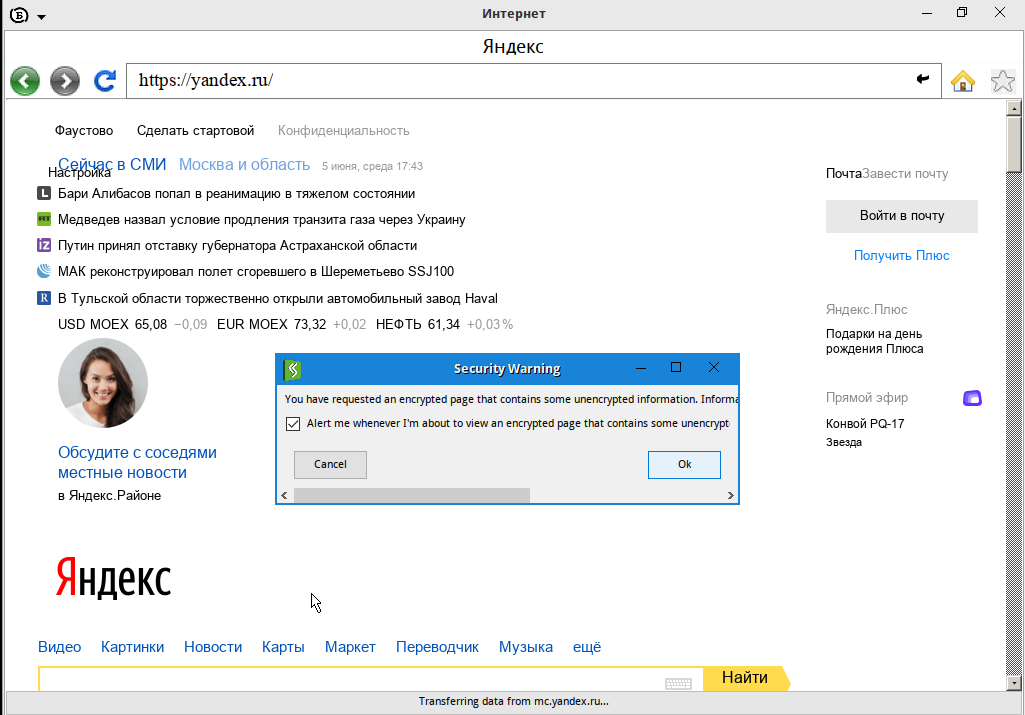

Mmmmmmmy eyes! .. A warning pops up in a piece of the window, in order to read everything, you have to scroll ... But I turned it all the way around, it was also possible.
Screenshot:

Safety warning ... understandably. Yandex is bad, certificates are not updated ... (sarcasm)
I do not know how to work with this. Without tears to look at it is simply impossible. In desperation, I tried to install Yandex Browser. It turned out that this browser from QP OS even knows how to use several tabs! Okay. Download. No indication, no alerts, except for choosing where to put the downloaded file. Download progress is also not displayed.
Screenshot:

In fact, I was not hoping to put J. Browser, it was just a gesture of despair. And in the end, he naturally did not lead to anything. The installer file was downloaded, but, of course, it did not start.
Btw, under the hood of the browser, it seems, Firefox version 41.0. But it is not exactly.
Screenshot:

4.3. Firewall
And finally, let's try the firewall.
Just want to say that it works.
Screenshots:



But there is one thing. Ha! And what about without it! If in the rule that is in the “Black List” section instead of the “Deny” radio button to put “Allow”, then the rule irrevocably disappears. It does not move to the "White List", it is simply destroyed.
4.4. Periphery equipment
“The printing system is written and works, but far from all supported printers ...” (c) It is logical. At the stage of OS development, focusing on the periphery is not the most expedient solution. But, having communicated with the development team, I can assume that if desired and necessary, they can port the necessary driver in the shortest possible time.
The support for scanners is unknown, but in the video report by V.Yu. Yegorov has words that “next year we want to implement support for scanners,” so we can assume that for the time being they are not working. About all sorts of web-cameras, microphones, Bluetooth-devices speech is also not.
5. On the gland
The system is:

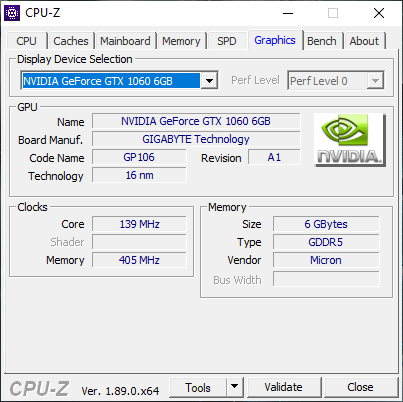



After some dances with a tambourine, I still put the QP OS on the iron. It turns out that the difference in the bootloaders in the system images provided to me for tests allows you to install the OS either from a CD or from a flash drive. Little things that are not documented and that have not been specified. Time was spent, but the sediment remained.
Okay. We go further.
QP OS formats 2TB HDD in FAT32 and makes it impossible to select any other file system.
I have to say, I tested the gland for a short time, I just did not have enough patience. I looked at the hypervisor and monitor errors.
I have 3 monitors, one of which is a home TV. The TV and work monitor are connected to the GTX 1060, and the 19 'auxiliary monitor is connected to the video card integrated in the motherboard, since there is no D-Sub output on the 1060. And what do you think, which monitor picked up the OS? .. That's right, small. And she refused to work with any other, giving an error when trying to initialize the second monitor.
Screenshot:

6. Office
I don’t see any point in focusing on it, since this package is even smarter than everything else in the OS, but I still consider it necessary to consecrate.
Tabular editor: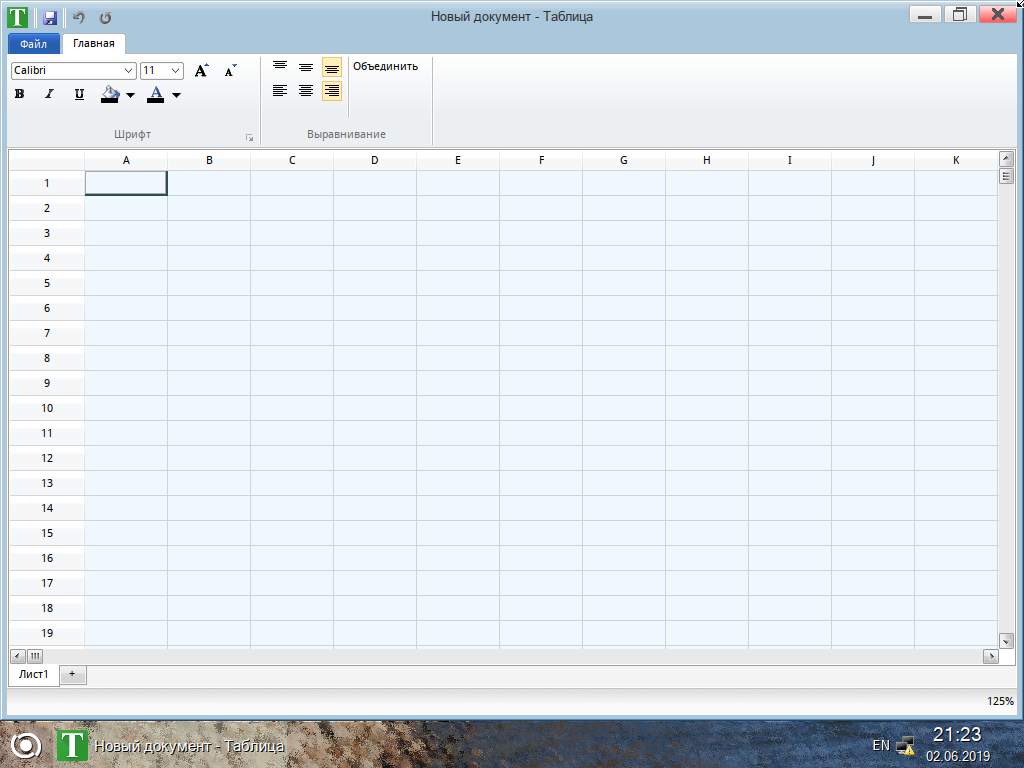

Text editor:





Presentation Editor:



Mail client:

7. QP VMM
Hypervisor. He works. What is there under the hood - is unknown. But this is clearly a type 2 hypervisor. Although:

It is installed together with the OS, from under it, and is controlled using a separate application. From the possibilities (from the developer’s site):
- implements IA32 and x64 hardware platforms;
- uses hardware virtualization of VTX, VTD (according to the developer, the hypervisor sends peripheral devices directly to the VM, and gives control to the drivers inside the guest OS);
- supports multiprocessing;
- provides independent hibernation of virtual machines;
- according to a developer representative, supports dynamic migration of virtual machines (moving from one host to another without stopping the virtual machine)
More here
Judging by the report of V.Yu. Egorova, Cryptosoft plans to implement the failover clustering of its hypervisor, and the development of QP VMM is moving in this direction.
But, everything is written fine, but what is in reality? We look.

This is a bug, not a feature. When you try to choose a path where the virtual hard disk image file will be saved, the system inserts a value in the path input field starting with "\\", and when you try to change this value, it gives an error from the screenshot. It is treated by manual input in the “C: \” path selection field. Little things but unpleasant.
There are few parameters when creating a new virtual machine. Quickly create, attach the installation image of Windows 7 and start.
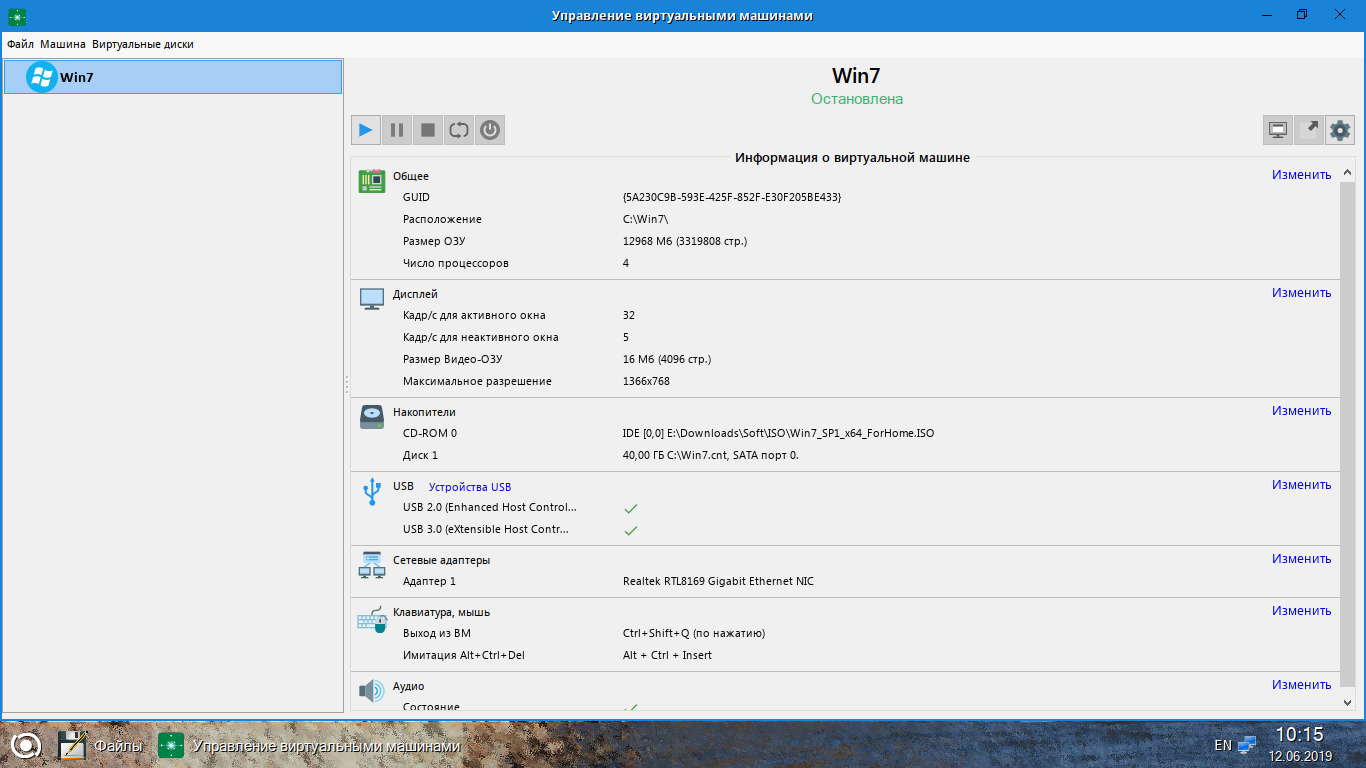
I gave VM all 4 cores. Consciously.

And ... We look at the right side of the screen ... What the? 100% system load ?! Whatoooooo ?! Task Manager! I call you!

It did not become clearer ... Advanced mode!
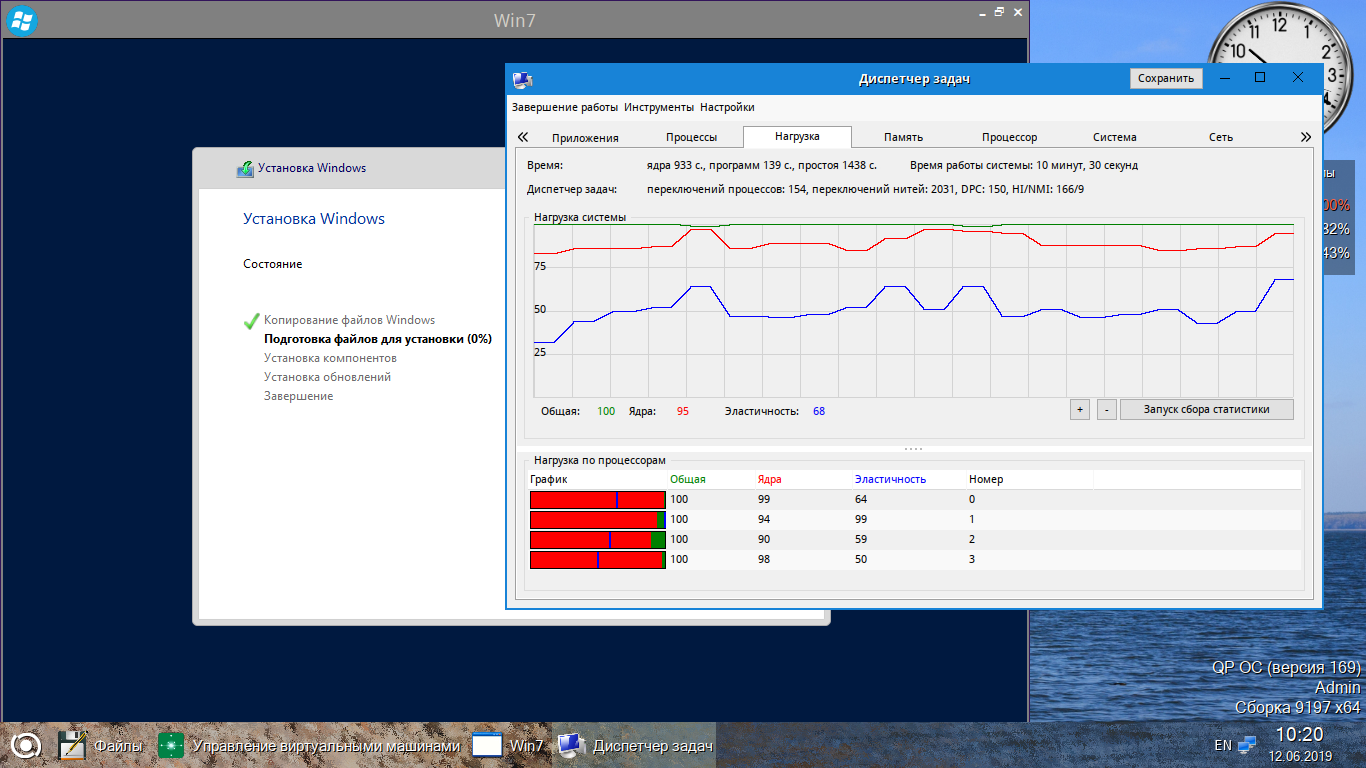
That is, the host gave all the selected resources to the guest OS, and shows me that he is well done, and that the CPU usage is 100%. The host itself does not lag, or does it imperceptibly.

Well, he allocated memory not dynamically, but when setting up the VM there was no choice of dynamic memory allocation. It is logical. But what happens to the CPU, I did not understand. If you turn on the logic, the following follows: the host gives the guest OS everything that is selected in the VM settings, and the guest OS in turn sees all these resources and uses them at its discretion. But why the host shows CPU utilization at 100% is unclear. That is, to conduct analytics and identify bottlenecks in performance is absolutely impossible. In principle, this is not so critical for home use, but, if you think further, and taking into account commercial operation - this is not at any gate.
Developer Comment:
The problem of determining the frequency of the processor in the hypervisor is related to calibration errors. This is due to the fact that some equipment requires adapting the calibration process to it. We decide.
7.1. QP VMM performance
Here I was waiting for disappointment. Pay attention to the time in the screenshots.


That is, he unpacked 29% in 13 minutes.Whereas on any other “normal” hypervisor, Windows would have already started the desktop.
What kind of performance you can have a conversation here is not clear. I did not wait for the full installation, I felt sorry for the electricity that was spent on this business, because if you believe the task manager, the PC ate it in the maximum possible amount. And no one will pay me money for the article, so I’ll also go to minus ...
Offtopic: the blue bar at the bottom of the screen is me playing with the “taskbar size”. It turned out that if we make it larger than the standard 45 pixels, then the transparency of the “additional” part is not implemented.
Screenshot:

Developer Comment:
QP . , , .
8.
It's damp.Is empty. Monstrous about anything. These are the first words that come to my mind.
I did not understand the situation with the .exe files. They are present in the OS, they run inside it. But none of the executable files designed for Windows even starts and reports an error. The developer says that they have their own executable format. Okay. Then why do they have .exe in the work? This creates a wild confusion in my head. In addition, under this your OS just do not have any software. Absolutely not. Work with the software that is built into it is impossible from the word at all. Applications in it are non-functional, cheeses, unfinished, frighteningly square.
OS is a base on which third-party applications are minded, as I can’t imagine using the same 1C server on QP OS. To do this, you need the 1C developer WANTED to rewrite your code for this new OS. Either the QP OS developer rewrote the 1C code (ha ha), or changed its OS so that 1C can work under it in its current form. But, apparently, none of these events will happen. Since 1C does not make sense to rewrite the code for the sake of the new OS, which has not been implemented in sufficient quantities, and bothering with porting the platform is simply inappropriate. For the sake of 100-1000 people? Not serious. And implementing QP OS on a larger number of machines will immediately be problematic, because normal people will not go to a complete stop of their enterprises until the software has been rewritten for the purchased OS.
I see here only one way out for the QP OS developer - change the strategy and use already existing software for my product. Otherwise, nothing will come of it.Unless, of course, they have no agreement with the highest echelons of power to introduce their OS with the power of orders from above. But that's all that ...
you rewrote the network protocol stack, as you say. Great! You are assured that your network connection is completely safe. This is a plus.But your network settings via DHCP are not accepted. DNS server must be registered manually. Inconvenient.This is a minus. If we consider the option with a custom PC running your OS, then this is generally a problem if you have some kind of a cant with the network, or the settings have changed. It is necessary to change the settings with everyone’s hands. I think this can be completed in the future, but so far this has not been implemented.
The OS only works with a specific hypervisor. This is also a huge minus. With all the desire it can not be called "universal" with this approach. Yes, maybe someday, it will work with Hyper-V and VirtualBox, but what will happen and when it will be is unknown. At this stage, the OS only works with VMware, and this is also a huge minus.
I do not see where QP OS can be used. As a firewall? Gateway? To do this, you can buy a complete piece of hardware, more reliable and much thinner customizable. As an OS for user PCs, it is in its present state completely unsuitable. The inability to use Office applications and the browser make it completely useless. That is, it cannot even in the 1C web application due to the lack of support for any modern technologies in the browser. This is all - another huge minus.
The user interface is still modifying and modifying. There is a work break. I'm not talking about visual bugs, I'm talking about functionality and fullness. You took the button "minimize all windows." She turns them off. Why it is impossible to make it so that when you press it again, it turns them back on? Well, you obviously took it with Windows, well. There such a mechanism is implemented. Another minus.
The main advantage of the OS is that it is protected. The developer is 100% sure that there are no “bookmarks” in it, which everyone is so afraid of. She is safe. A part of its modules, according to the developer’s assurances, was written anew ...
Then I have only one question - and those modules that aren’t "written again," where did they come from? .. From Windows?
The hypervisor of expectations did not meet even 10 percent of a percent. It is not possible to operate it in the product environment due to performance. Yes, he has pleasing opportunities, but they do not take out against the backdrop of monstrous flaws and drawdowns.
TOTAL:
If we deny the fact that at the present moment the OS is noncompetitive, cheese and unfinished ... hmm ... not the essence. In short, if you think a bit on the future, the OS may well be on par with competitors. Due to the fact that it is made anew, and made with us. But up to this point, developers will have to work a lot. Very, very much. The base is not bad, it remains only to solve the problem of filling, software, functionality and equipment.
9. Opinion
Development of the OS at the very beginning. I do not know that the developers took as a basis their QP OS, but it seems to me that it was Windows. Even if they were simply inspired by the system created by Bill Gates, and the borrowing took place not by crude copying, but by similarity, it is still extremely close to Windows of very early versions. Hotkeys, service and application names, appearance. But this, in my opinion, is also a definite plus of the system; the threshold for entering it will not be as enormous as when switching from Windows to Linux.
Developer Comment:
From Windows, we take the interfaces, not to reinvent the wheel, to organize the familiar environment for the user. We do not use binaries from Windows OS, since low-level API is incompatible with the Windows operating system family.
There are a couple of QP OS videos on the Internet. One of them is the report of V.Yu. Yegorova. At the very beginning, he says the following: “We, in contrast to the others, are not a real-time system at all, we are a general-purpose system, and we have written this system of wasps from scratch in Russia in Penza in Russia ... It has nothing to do with OS Linux »And not a word about the attitude to the OS Windows. Also V.Yu. Egorov focuses on system survivability, not reliability.
In general, the concept of the operating system looks neat and if we can fantasize a little, then we can hope that the developer will finish the interface and they can even be used normally. I like the emphasis on graphical interfaces of everything that is possible. Yes, opponents of the X will punish me, but it is much more pleasant for me to see the picture as a whole in a separate window than to dig in kilotons of text lines to set up a couple of variables. The FireWall interface pleased me. If the GUI of all system applications is just as pleasant and informative, it will be great.
Talk about the use of the OS in its current state in the grocery environment is not necessary. It is impossible to raise key services. And the fact that you can raise it is not worth it to bother, since it is easier to do this on familiar Linux or Windows distributions. In order to start using QP OS, you need to rewrite a huge part of the already existing software for it, and here we get a vicious circle. In the conclusions I have already spoken about this. The site has a scheme containing "where you can use QP OS", but ...
In short, here it is:

I will make a reservation about the picture:
- Terminal Server to raise without authorization through the directory service - monkey work and hell for the administrator.
- Virtual machine server with what is at the moment - not a grocery solution.
- Mail server without authorization support through the directory service - see the item about the terminal server.
- File server without directory service support - see the item about the terminal server.
- Thin clients? Perhaps I did not see the implementation of this decision.
- Firewall? Yes, but there are much more productive and more functional iron solutions. This niche has long been occupied.
- A workstation without support for authorization through a directory service ... without group policies ... This is a real hell for system administrators.
The stability of the system I, in fact, failed to check. How to check the system, under which it is impossible to run any time-tested test? One time she died with BSOD (in the case of QP OS, this is RSOD, since they have a red death screen), caused by an error related to the operation of the video driver (according to the developer). It was under Hyper-V, so ...
QP VMM development plans pleased me. If Cryptosoft realizes its ideas in the direction of clustering, it will be at least interesting. True, as long as they do not finish the performance of their VMM, and support for a wide range of iron, it will not be very productive, but still. I want to believe that the guys know their stuff, and they will succeed.
PS:
"Today, we, the developers of the QP OS system, by virtue of a number of
objective reasons can not fully compete with Microsoft and Linux
by the community. Therefore, the operating system does not yet have the volume
functional and level of support that are in MS Windows and Linux.
Most of the shortcomings that are described in the article are associated with features
system operation and eliminated its correct setting. However, at present
There is no detailed teaching literature on the system describing such
settings. We understand this, and therefore one of the directions of our further
development is the writing of manuals and methodologies for working with components
systems. "
(c) Head of the System Research Department of the NTP “Cryptosoft”, I.N. Doroshenko
Source: https://habr.com/ru/post/457132/
All Articles